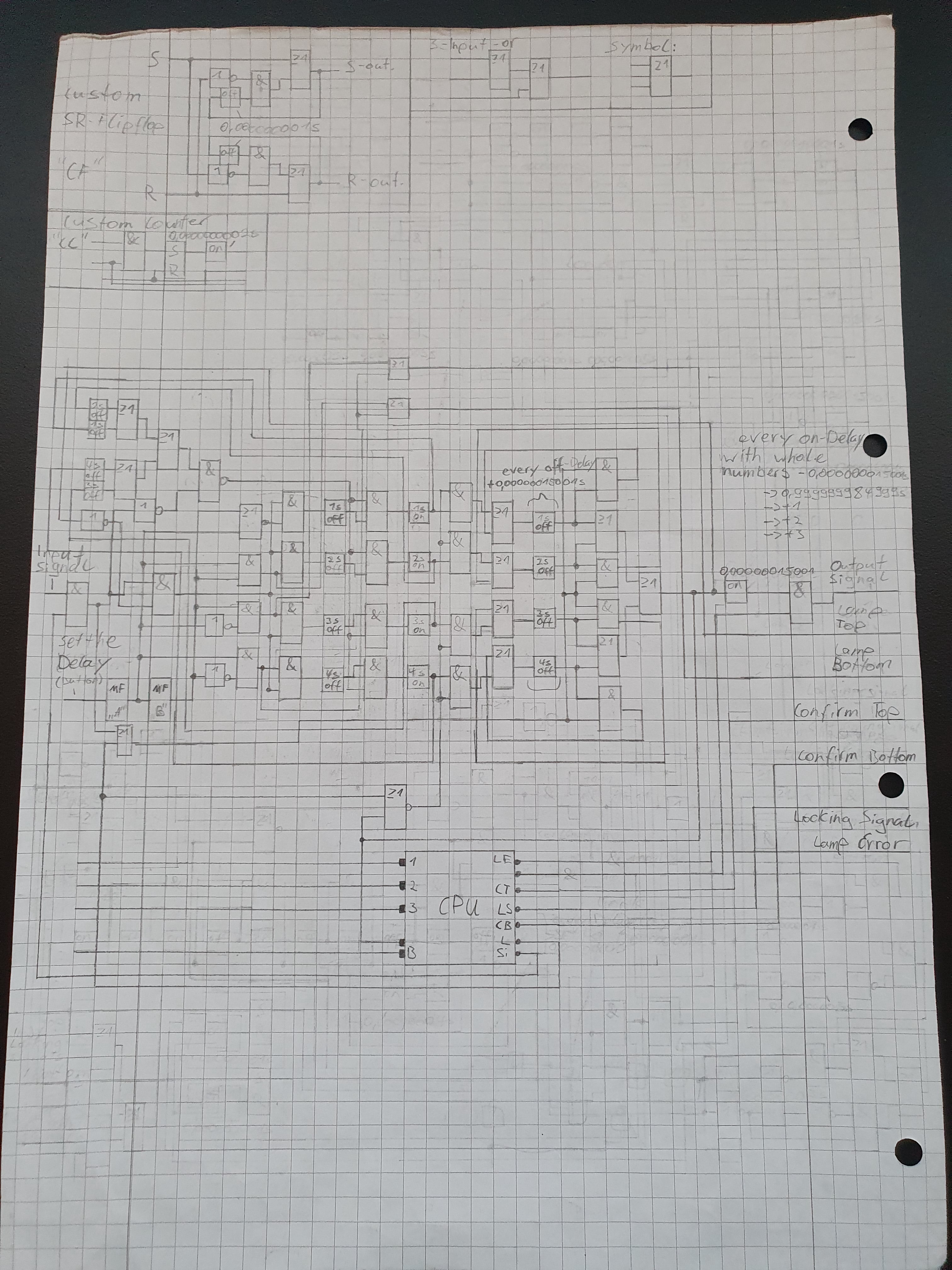TheCubeCrafter
576
11
5

I came to the idea of drawing the repeater's functions with digital logic gates, when we started in school to work with LogicSim and I thought of making a decoder like in Minecraft. I tried a version but it didn't work. So I made a version of a repeater but it was so tiny and had so many issues that I wanted to make a perfect repeater.
So I thought and thought always thinking that a repeater saves its signal in a Set-Reset-Flipflop and resets itself when there is no signal and the off-delay turned off. But still this version wasn't correct.
So I had another idea: A repeater keeps its status (on and off) from the last off-delay in a loop only when it's locked and blocks every incoming signal from the back and from the on-delay. It worked good, so I wanted to optimize the locking and unlocking, so you can only lock the repeater using another repeater or a comparator. The result is that the repeaters communicate with each other to make sure which signal has to be sent.
I created two decoders and three encoders. One decoder is responsible for analysing the locking-, unlocking- and confirming-signals and giving a specified output for each binary code. The other decoder is for setting the type of locking signal that would have to be sent. I created them all in modules, so I could easily replicate them using only one building block. I put all the modules together in one module, the CPU of the repeater. Yes CPU. The repeater (or maybe only my version) is so complex it needs an own CPU, so it's basically a small computer.
The repeater has 4 inputs. One input is the signal that needs to go through the repeater. One is for the other repeater that is locked by this repeater. Two are for the two other repeaters that can lock this one. Every of those three inputs has an own decoder for the locking-, unlocking- and the confirming-signal. It doesn't matter where each signal is connected to, since the repeater sends signal to the other two that lock him so they know which signal they have to send. The repeater has four delays through which you can switch through with a button. The encoders are for the locking-, unlocking-, confirming- and the setting-signals that need to go to the other repeaters.

But now to the functions:
The input signal goes into the repeater and activates an on-delay which then activates an off-Delay. The delays are currently set to 1s, 2s, 3s and 4s (every on-delay with whole numbers -0,00000015001s [this subtraction is for the locking, the confirming and the {if needed} unlocking signal if no confirming signal arrived] ) so that a human can use it properly. The current delay can be seen via two lamps at the output cables in a binary code.
A small but important role of the repeater is the locking of the current status. Everytime when a repeater gets a signal, the signal goes into a delay and activates an encoder (which is basically a component that uses the observer-technic from Minecraft) to send a binary code to a repeater to lock said repeater. This repeater sends a confirming signal to the repeater that locked him. When this repeater gets the signal it blocks the output signal since you can't get an output from a repeater when he locks another one.
Now you could say: " Oh well, let's just don't connect the confirming signal with the locking repeater and everything's fine!" Well no, because the repeater that locks, activates another delay. The delay is timed so good, that it activates only shortly after the confirming signal should have come to block said delay. But if no confirming signal arrives (which is a binary code too) the delay activates the encoder for unlocking and this unlocks the other repeater.

As this is very complex I'm always open to improvements and suggestions. So if you find an error that could show up, PLEASE tell me and write it in the comments, because I am also just a human that can overlook something. Also when you have a question on the functions and more, write it in the comments and I will answer your question as good as I can. And don't be confused about the unused custom counter. I used it before I saw that I didn't need it but I still didn't erase it.
UWAGAGABLAGABLAGABA
Might i recommend yEd? It's a great tool for drawing diagrams like this. It's a great alternative to Vizio and is free.
truemetalman
Damn those are some clean schematics.
TheCubeCrafter
Thanks. I wanted it to be easy to understand